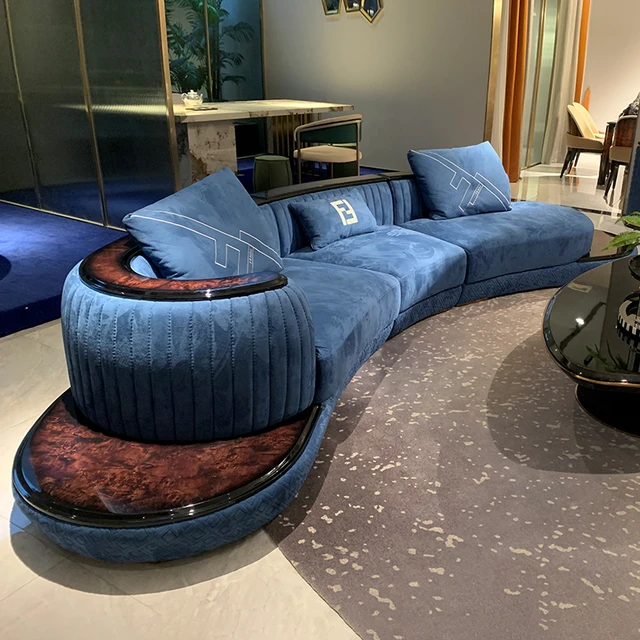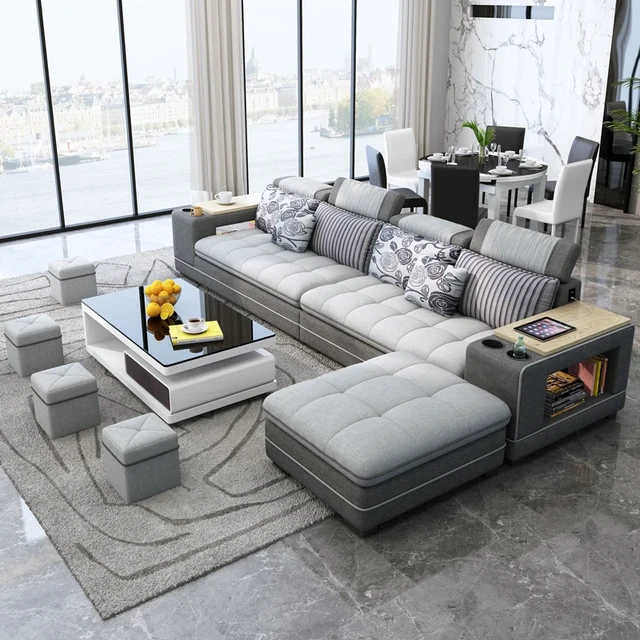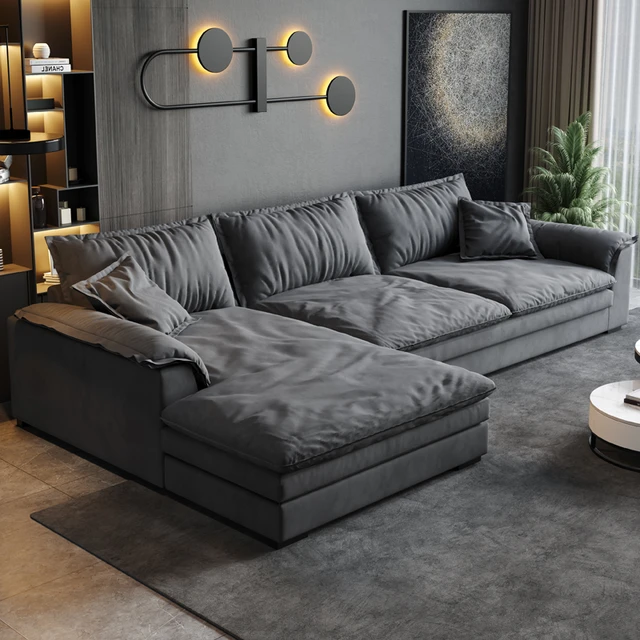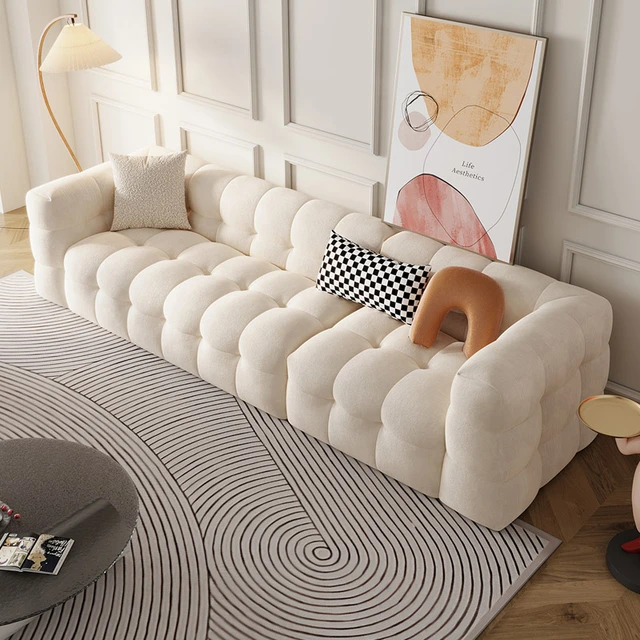 Introduction:
Introduction:
Making a sofa may seem like a daunting task, but with the right guidance and tools, it can be a rewarding project. Creating your own sofa allows you to customize the design, size, and fabric to suit your preferences and needs. In this comprehensive guide, we will explore the step-by-step process of making a sofa, from planning and designing to constructing and finishing. By following these instructions, you can create a unique and comfortable sofa that adds beauty and functionality to your space.
 Some common types of sofas:
Some common types of sofas:
There are several types of sofas available, each with its own design and functionality. Here are some common types of sofas:
Sectional Sofa:
A sectional sofa consists of multiple sections or modules that can be arranged in various configurations, such as L-shaped or U-shaped, to fit different spaces. It provides ample seating and is ideal for larger living rooms or open concept spaces.
Chesterfield Sofa:
The Chesterfield sofa is a classic design featuring deep button tufting, rolled arms, and luxurious upholstery. It has a timeless and elegant appearance, often associated with traditional or vintage decor styles.
Sleeper Sofa:
Also known as a sofa bed or pull-out sofa, a sleeper sofa offers both seating and a hidden mattress that can be pulled out when needed to provide an extra bed for guests. It is a versatile option for smaller spaces or rooms without a dedicated guest bedroom.
Loveseat:
A loveseat is a smaller sofa designed to comfortably seat two people. It is an ideal choice for cozy spaces or as an additional seating option in a living room or bedroom.
Reclining Sofa:
A reclining sofa typically features one or more reclining seats, allowing users to stretch out and relax in a reclined position. It is perfect for those looking for additional comfort and a lounging experience.
Mid-Century Modern Sofa:
This style of sofa is inspired by the design trends from the mid-20th century, characterized by clean lines, minimalistic aesthetics, and tapered legs. It adds a retro and stylish touch to any space.
Convertible Sofa:
A convertible sofa, also known as a futon, can transform from a sofa into a bed by adjusting the position of the backrest. It offers versatility and is commonly found in spaces where multi-purpose furniture is desired.
Camelback Sofa:
The camelback sofa features a distinctive arched backrest in the shape of a camel’s hump. It often has exposed wooden legs and elegant upholstery, lending a sophisticated and traditional look to a room.
These are just a few examples of the many types of sofas available on the market. Choosing the right type of sofa depends on one’s personal style, space requirements, and desired functionality.
Planning and Designing Your Sofa
Determine the Size and Style:
Measure the space where the sofa will be placed to determine the ideal dimensions for your sofa.
Choose a style that complements your existing decor and suits your personal taste, whether it be traditional, modern, or contemporary.
Sketch the Design:
Create a rough sketch of your sofa design, outlining the dimensions, shape, and any specific features you want to incorporate.
Consider the number of seats, armrest style, backrest height, and other design elements.
 Gathering Materials and Tools
Gathering Materials and Tools
Frame Materials:
Choose sturdy and durable materials for the sofa frame, such as hardwood or plywood.
Ensure the materials are of sufficient thickness and strength to support the weight and provide stability.
Foam and Cushion Materials:
Decide on the type and density of foam for the seat and back cushions based on your desired level of comfort.
Select upholstery fabric that is both aesthetically pleasing and durable.
Tools:
Gather essential tools, including a saw, drill, screws, upholstery needles, and an electric staple gun.
Ensure you have measuring tape, scissors, upholstery thread, and other necessary tools for accurate measurements and fabric work.
Constructing the Sofa Frame
Cutting and Assembly:
Cut the frame components according to your design measurements using a saw.
Assemble the frame using screws and appropriate joinery techniques for stability and strength.
Reinforcement:
Strengthen critical areas of the frame, such as the corners and joints, using metal brackets or additional support blocks.
Ensure all connections are secure to withstand regular use and weight distribution.
 Upholstering the Sofa
Upholstering the Sofa
Foam and Cushion Preparation:
Cut the foam to fit the seat and backrest dimensions, ensuring a snug fit.
Wrap the foam in polyester batting for a smooth and finished look.
Upholstery Fabric Application:
Measure and cut the upholstery fabric, leaving sufficient allowance for seams and folds.
Use an electric staple gun to attach the fabric to the frame, starting from the bottom and working your way up.
Sewing and Finishing Touches:
Sew the cushion covers and any additional fabric pieces like armrest covers or decorative pillows.
Attach zippers, buttons, or other closures as needed.
Fit the cushion covers onto the foam inserts and secure them in place.
Final Steps and Considerations
Testing and Quality Assurance:
Test the sturdiness, comfort, and overall functionality of your sofa before finalizing the construction.
Make any necessary adjustments or reinforcements to ensure a safe and comfortable seating experience.
Finishing and Detailing:
Sand any rough edges or surfaces on the frame for a smooth finish.
Apply a sealant, paint, or stain to protect the wood, enhance its appearance, and match your desired aesthetic.
Some general guidelines to keep in mind when cleaning a sofa:
Here are some general guidelines to keep in mind when cleaning a sofa:
Check the Manufacturer’s Instructions:
Before cleaning your sofa, refer to the manufacturer’s instructions or care label for specific cleaning recommendations. Different sofas may have different cleaning requirements based on the fabric or material used.
Vacuum Regularly:
Regularly vacuum your sofa using a brush attachment to remove dust, crumbs, and pet hair. Vacuuming helps prevent dirt and debris from settling into the fabric, keeping it clean and fresh.
Spot Clean Stains:
If a spill or stain occurs, act quickly. Blot the stain gently with a clean cloth or paper towel to absorb any liquids. Avoid rubbing the stain, as this can spread it or damage the fabric. Use a mild detergent or a specific upholstery cleaner recommended for your sofa to treat the stain according to the instructions.
Test Cleaning Products:
Before applying any cleaning solution or product to the entire sofa, test it on a small, inconspicuous area to check for any adverse reactions or color fading. This step is important to ensure the product is safe for your sofa’s fabric.
Use Gentle Cleaning Methods:
When cleaning the entire sofa, use a gentle cleaning solution or a mixture of mild soap and water. Apply the solution with a soft cloth or sponge, and gently scrub the sofa in a circular motion. Avoid excessive moisture, as it can damage the upholstery or padding.
Air Dry Thoroughly:
After cleaning, allow the sofa to air dry completely before using it again. Keep it away from direct sunlight or heat sources that can cause shrinking or fading.
Consider Professional Cleaning:
For heavily soiled sofas or if you’re unsure about the appropriate cleaning method, consider hiring professional upholstery cleaners. They have the expertise and specialized equipment to deep clean and refresh your sofa effectively.
Remember, it’s essential to follow proper cleaning practices and tailor them to the specific upholstery fabric of your sofa. Regular maintenance and prompt attention to spills or stains can help prolong the lifespan and appearance of your sofa.
 Conclusion:
Conclusion:
Building your own sofa combines creativity, skill, and practicality, resulting in a piece of furniture tailored to your preferences. By following the steps outlined in this comprehensive guide, you can confidently embark on the journey of making your own sofa. Take the time to plan, gather the necessary materials and tools, and carefully construct and upholster the sofa to create a modern and functional piece for your space. Let this guide serve as a valuable resource in the process of making a sofa, encouraging your creativity and craftsmanship.


